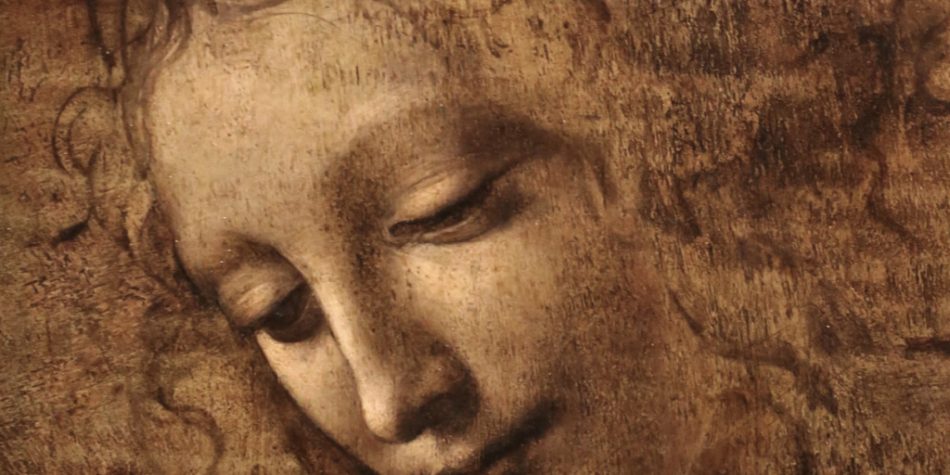“Four entered Pardes: Ben Azzai, Ben Zoma, Aher, and Rabbi Akiva. Ben Azzai glimpsed and died.” — Chagigah, 14b
I learned of President Henry B. Eyring’s infinite humility in March of 2017 when both he and Elder Jeffrey R. Holland spoke to the youth of The Church of Jesus Christ of Latter-day Saints for a Face-to-Face fireside. During the event (starting at minute 38:00), the two apostles received a question regarding how the youth of the Church might improve their prayers. One young lady specifically asked how she might better “the conversational” nature of her communication with God the Father. President Eyring smiled and started by saying, “Be modest in your expectations. God is close, and he loves you, and he’d love to have a conversation, but remember,” with his hand raised, “he is God.” He smiled again, then leaned over to Elder Holland, saying, “I always worry when someone is speaking to him in too familiar a way, because it is not easy.”
He then continued, teaching that our ideas are not those of God and that the concept of having a “chat” with him is rather incongruous in the sense that his thoughts are not our thoughts, nor his ways our ways. President Eyring spoke about how he prays “as if [God] is there, as if he is listening. … I believe he is always sending messages to me, I really do. But sometimes there are long silences. So, when she [referring to the young lady who asked the question] speaks of having a conversation in her prayers, she’s making it sound a little more casual than I think it’s possible to be. This is … we’re dealing with God the Father, and his son Jesus Christ.” Then he raised his hands to the height of his chest in devoted reverence, his voice nearly choking up, “And they are so far above us.”
The sanctity with which he spoke this last sentence has stayed with me these five years as I’ve contemplated how I ought to approach the Eternal God — the Creator of the Universe — in prayer.
I was reminded of these teachings during the last few months of social media scuffles and twittery blurs regarding the sacred doctrine of a Heavenly Mother. These flitterings and tweets (both from what one might call the “Progmos” and the “Deznats”) gained enough attention to elicit a response in the recent April 2022 General Conference, wherein Elder Dale G. Renlund reminded the members of the Church that we neither pray to nor worship our Heavenly Mother. The apostle warned that “reason,” meaning thinking and writing one’s way to Heavenly Mother, “cannot replace revelation” and that “speculation won’t lead to greater spiritual knowledge, but it can lead us to deception or divert our focus from what has been revealed.” Prayer is the mechanism by which your soul is allowed the infinite attention of God.
But I, like most in the restored Church of Jesus Christ, love the doctrine of a Mother in Heaven — it is pure in its simplicity and beautiful in possibility, a perfect theme for poetic expression. It’s marvelous to think about and ponder in our hearts. The doctrine, simple as it is, stands consonant with our own theological understanding of the Universe, our place in it, and our own likeness in the image of God. To have a Mother in Heaven is to know that the Family is, both figuratively and literally, everything: that the entirety of life — all its purpose, beauties, majesty, tragedies, failures, weepings, stories, sciences, arts, music, loving, growth, religions, philosophies, cultures— can be condensed into that one word: Family.
But my heart skips a beat or two at the irreverent nature with which many people online (both advocates for prayers to, revelation from, and the worshiping of Mother God, as well as those pushing back on said advocates, or countering their arguments with light-mindedness) toss around fleeting ideas concerning the subject. I am reminded of President Eyring’s tone of seriousness as he explained to those youth that prayer is not a matter of dialing up the phone to talk to Mommy and Daddy and ordering your Happy Meal™. No — prayer is the mechanism by which your soul is allowed the infinite attention of God, like exposing your mortal body to the direct nuclear rays of the sun. And those rays can burn—especially if you lack the humility and spiritual preparation necessary for when they come.
The Divine Feminine, of course, is not unique to us Latter-day Saints. The concept courses throughout the ages of human history from the Mesopotamians to the Greeks and the Romans (Carl Jung’s Answer to Job includes much more on this). One of the more famous examples is the Medusa, daughter of Phorcys and Ceto, deities of the sea, who transformed in the stories over time, from an ugly creature to a goddess of beauty and poise. The myths state that any who gazed upon the face of Medusa would turn to stone. Her power was such that when Perseus severed her head from the body her gaze still maintained the powerful ability to damn and was thus used as a military weapon against enemies. While we certainly don’t believe in a heavenly monster above who wants to turn us to stone or laugh in our face (in the Tel Quel sense), the pagan theology still holds great insight into our contemporary issue: to attempt to see and fixate on something beyond our ability to see is to be damned, stunted, turned to stone. The story teaches that there are things that exist beyond our capacity to understand or even hold in our hearts — I believe the case of Heavenly Mother is one of them, and to attempt anything contrary is ultimately a repeat of Babel’s Tower. We are, after all, on the other side of a veil that separates our saturated world from the infinite divinity of heaven. That veil is no punishment, but a divine gift — cherubim and a flaming sword guarding the many trees of life we do not fully understand—that we may not partake and live infinitely in mortal, stony death.
There is great temptation to explore and better understand the complete beauty of our Heavenly Parents (I long for it myself, as does Elder Renlund), but I feel we are nothing near ready to understand what that knowledge might entail. We would all do well to embody the example of Mary, to keep and “treasure” these things in our hearts and not share them for social media likes or contemporary influence. Let these things stir within and grow in light, leaving our hearts, minds, and bodies not through words and narrative, but by our actions and love for others. It is by this (as we should all well know) that we will be known as disciples of Christ, not by the beauty of our tweets or poetry, however articulate and insightful.
I worry that the casual nature with which this topic shuffles around both the dark and bright corners of the internet constitutes the taking of her name in vain. In some ways, perhaps I have taken her name in vain by simply writing this article. I offer them today humbly, in my own limited understanding. But I would do well to take the high road, as President Eyring, by going low—low to the dust of the earth, and remembering that clay from which we come and unto which we must return . May we trust prophetic teachings— for neither you nor I (right now, at least) are prepared for anything else.
















